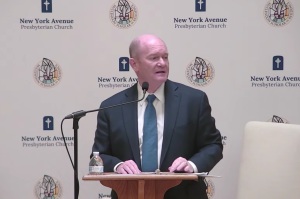Airbus 'Flying Taxi' Specs News: First Successful Test Flight Seen in Video
Airbus shows off the first successful flight of its so-called "flying taxi," Vahana, which means mount of a god in Sanskrit.
The electric vertical take-off and landing (eVTOL) aircraft was first launched into air back in January, although the footage of it was only released this week. Vahana successfully flew 16 feet above the ground, not much, but a good start for the future of air commute.
The previous Airbus press release said the "flying taxi" hovered for 53 seconds, a claim that is now supported by the released clip.
Right now, the eVTOL aircraft's egg-shaped cabin is not much to look at. It has eight rotors and wings that tilt up for vertical flight and forward for horizontal flight. The Verge likens it more to a confused helicopter than a "flying car," but admits it is a great breakthrough in battery-powered flight.
The European manufacturer's goal is to create a fleet of eVTOL aircraft to become a personal, autonomous taxi service. Sometime in the future, it should be able to fly passengers from rooftop to rooftop, especially in dense urban areas where traffic tends to be at a standstill.
In a blog post written by project executive Zach Lovering after the aircraft's successful launch, he said their team is to ease the growing need for urban mobility.
"Our goal is to democratize personal flight by leveraging the latest technologies such as electric propulsion, energy storage, and machine vision," he wrote in the blog. "Our first flights mark a huge milestone for Vahana as well as the global pursuit of urban air mobility."
Vahana was first launched in 2016, as among the first projects of Airbus' Silicon Valley-based subsidiary, A3.
The company still has a long way to go in the development of the "flying taxi." Its ultimate goal is to one day create a vehicle that could go four times faster than cars often caught up in traffic, and has a range of 50 miles, with a cost that is almost similar to taking the car or train.



























